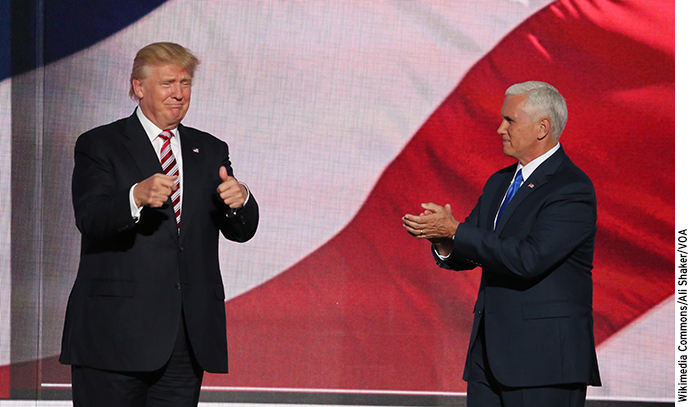
With Donald Trump set to enter the Oval Office, Vice President-elect Michael Pence seems likely to shape the federal role in education for the next four years. As a former governor who made school reform a top priority, Pence will interpret the Every Student Succeeds Act (ESSA) as a barrier to federal oversight of state and local decisions. Testing will continue but how to respond to test results will be left to the states. The lowest-performing schools will be identified but the federal government will be reluctant to instruct states as to the steps that need to be taken to improve them. Regulations on how districts allocate their own funds to schools that are currently under consideration by Obama’s team will be withdrawn.
Trump’s appointment of a new member of the Supreme Court will constitute his major contribution to education reform. With a conservative replacement for the late Antonin Scalia, the Court will not entertain efforts to overturn two of the late twentieth century’s biggest decisions—Milliken (leaving de facto segregation intact) and Rodriguez (denying constitutional status to equal-funding claims). Yet it may well seek out another opportunity to prevent teachers unions from collecting fees from non-members, an issue that evenly divided the Court this summer.
The Obama Administration’s propensity to legislate “by pen and phone” will give Trump many opportunities to change direction quickly. Letters from the Education Department’s Office of Civil Rights to school district officials, warning them that the prosecutorial weight of the federal government will be employed if they do not justify disparities in discipline rates and resources across racial and ethnic lines, will be withdrawn or simply ignored.
Trump and Pence will probably facilitate a broadening of pre-school education. Providing additional support for parents with young children is too popular with middle-class families to be ignored. But college students should plan to pay for their own education in the years to come. The federal government is not going to backstop their debts.
Federal funding for K-12 education—in real-dollar terms—will continue to slide gently downward. Congress will come under no pressure to reverse a trend underway since 2010.
Nor should the school choice movement expect much from Washington. Charters will continue to get some start-up money. The Washington D. C. school voucher program will be revived.
But the real battle for school choice will take place in the states—under circumstances that can suddenly turn unfavorable to school reformers. Already, unions have targeted charters as the major threat to the district-union monopoly, and unions can be expected to redouble their efforts in the coming years. Off-year elections are bad occasions for the party that commands the Oval Office. Democrats, furious at what seems to them to have been a last-minute loss in 2016, will organize for a comeback in 2018, while Republicans will be divided between the mainstream party faithful and the Trump-aided Tea Party faction.
Unless major steps are taken immediately—and nothing on the horizon suggests strong gubernatorial or other high-level political leadership on education—the reform agenda will be buried. Charter expansion, teacher tenure reform, merit pay, and school accountability will all face tough sledding is most states.
Digital learning is the one arena where new developments are likely, whatever the political situation. Technological innovation is embraced by leaders on both sides of the political aisle, and lawmakers may look here for ways to build a consensus that can offer new opportunities for students.
— Paul E. Peterson
Paul E. Peterson is the Henry Lee Shattuck Professor of Government and Director of the Program on Education Policy and Governance at Harvard University, a Senior Fellow at the Hoover Institution at Stanford University, and Senior Editor of Education Next.


